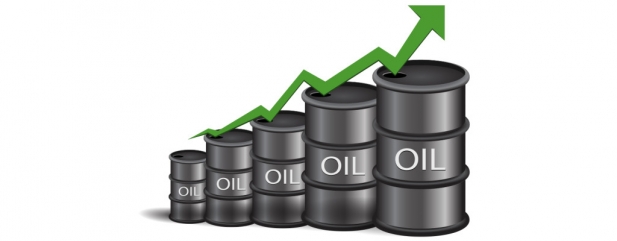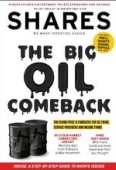Archived article
Please note that tax, investment, pension and ISA rules can change and the information and any views contained in this article may now be inaccurate.
The underappreciated risk to a strong oil price

The recovery in the oil price to $70 per barrel is one of the most significant events to happen in the natural resources industry for a long time. It transforms the finances of many companies and it should open up development of new projects and rejuvenate the supply chain.
While we discuss the positive implications in detail in this week’s digital magazine, I thought it worth pointing out one potentially negative implication from a stronger oil price – and that’s the pursuit of projects that only work at higher prices.
This is a really important point to consider if you’re thinking about investing in the natural resources sector. It also applies to mining projects as well, assuming the relevant metal or energy prices are also in a rising trend.
EXPERIENCE PAYS OFF IN RESOURCES INVESTING
I’ve been writing about the resources sector for the past 13 years. I started covering the mining sector just as the previous commodities bull-run was taking shape. I’ve seen the way the industry works in boom times and I’ve also seen how it collapses in bad times. This experience has given me a more rounded view of the broader sector which is necessary to properly analyse stocks.
If you’ve only been investing in this space for the past few years, I’d highly recommend chatting to more seasoned investors about what they saw when commodity prices fell in previous years – as life got very ugly for the sector.
In good times, you tend to see exploration firms start to work on marginal projects that are only economical at strong commodity prices. Management will inevitably convince investors that prices are only going one way (upwards) and that their company will be making good profit margins by the time the project is in production.
You cannot assume prices will keep rising. When looking at an exploration project, it is important to understand the potential operating cost before considering an investment. The lower the cost the better as that provides some cushion to still make money even if commodity prices start to ease back.
What’s really interesting, and perhaps underappreciated, is the fact that many of the large oil producers have spent the past few years streamlining not only their asset base but also their operations. They now have more efficient businesses and can survive at lower oil prices. Therefore the current oil price strength should enhance profits in a significant way.
To me, that makes them far more attractive investments than an exploration firm with a ‘hot prospect’ that only works if oil prices don’t fall back.
RARE OPPORTUNITY WITH SHELL
Royal Dutch Shell (RDSB), in particular, looks very attractive as an income and growth play. It has underperformed the rising oil price since November 2017, making now an ideal time to pick up shares as historically it has displayed very close leverage to the performance of the oil price, so underperformance may not last long.
That said; buying oil shares does require taking a view on the long term demand for oil. Bank of America Merrill Lynch sees peak oil demand in 2030 with the rise of the electric vehicle industry as a long-term threat to oil demand. Big oil companies will likely have to shift to natural gas and chemicals in order to prosper long term. (DC)
Important information:
These articles are provided by Shares magazine which is published by AJ Bell Media, a part of AJ Bell. Shares is not written by AJ Bell.
Shares is provided for your general information and use and is not a personal recommendation to invest. It is not intended to be relied upon by you in making or not making any investment decisions. The investments referred to in these articles will not be suitable for all investors. If in doubt please seek appropriate independent financial advice.
Investors acting on the information in these articles do so at their own risk and AJ Bell Media and its staff do not accept liability for losses suffered by investors as a result of their investment decisions.
Issue contents
Big News
- EMIS stung by after-care foul-up
- Draper backing for cryptocurrency start-up
- Market shock after Dignity unveils radical new pricing structure
- Top performing funds are harder to find
- US treasury yields hit highest level since 2014
- Bookies bashed on £2 betting stake cap reports
- Connect crashes on profit warning

 magazine
magazine









